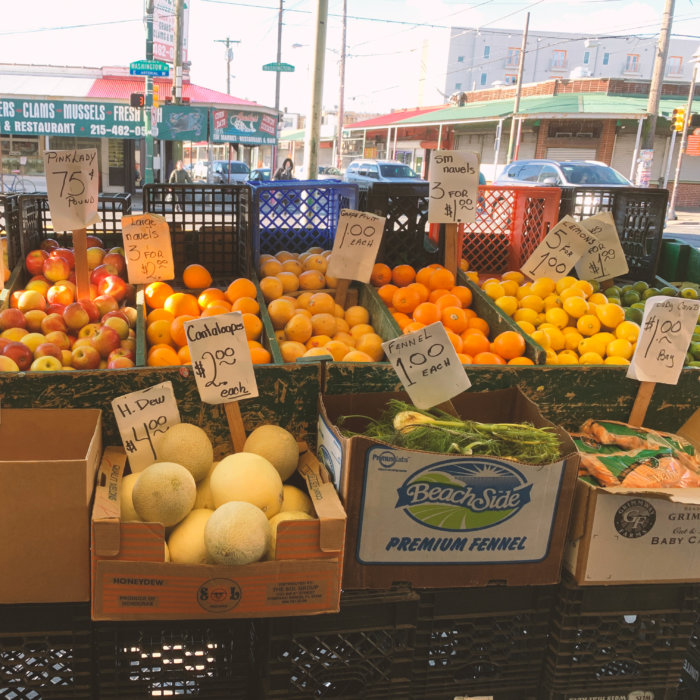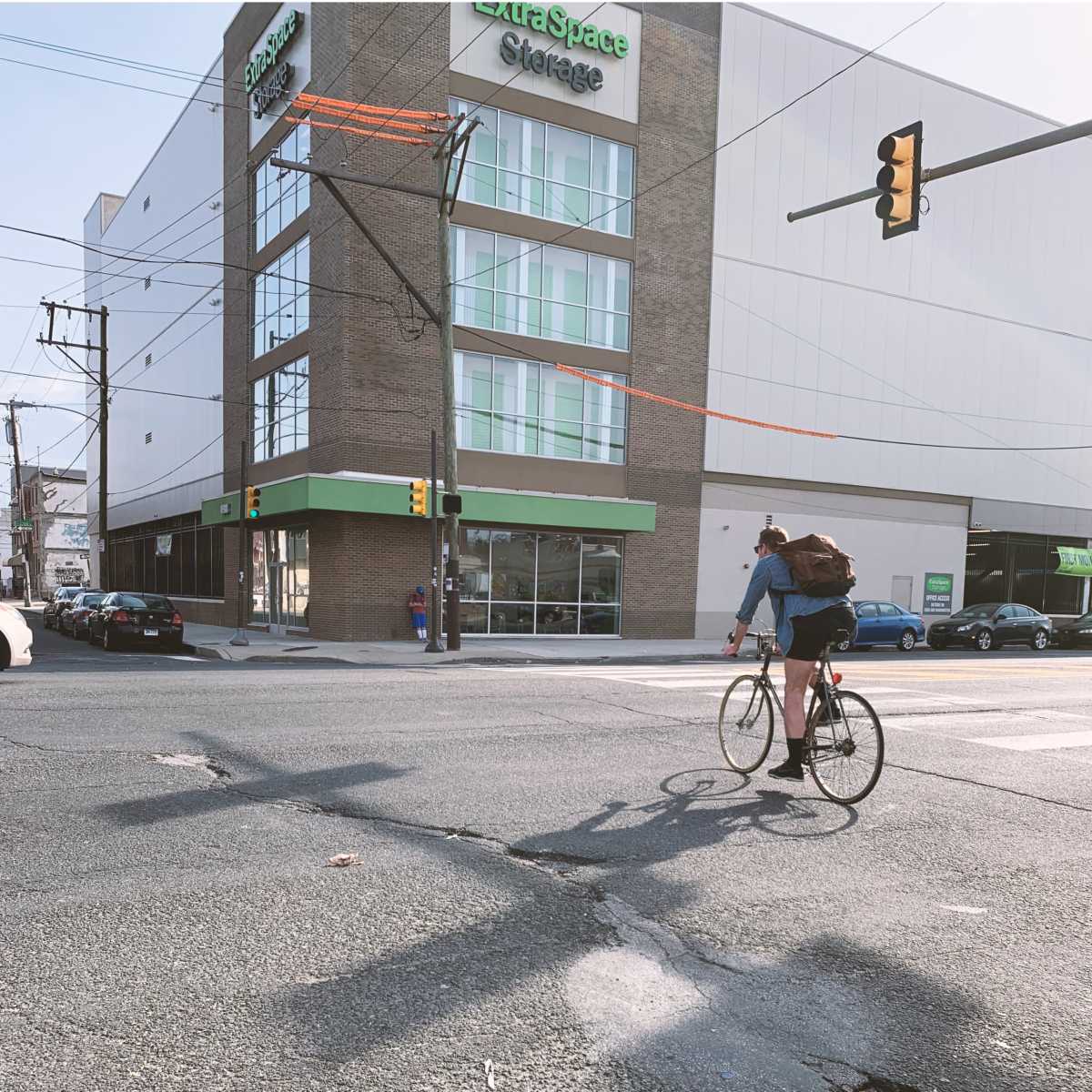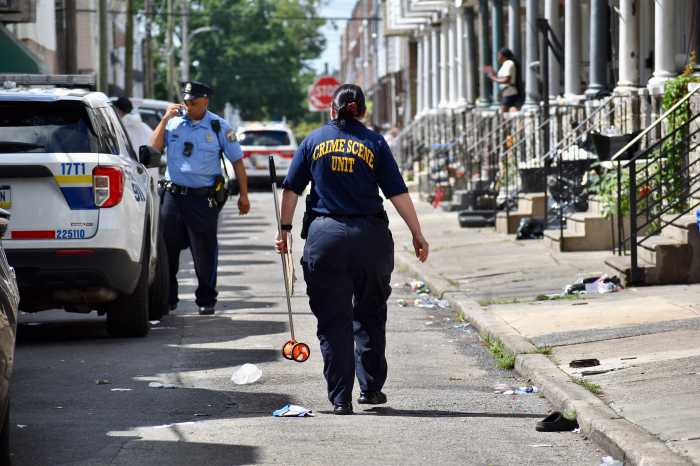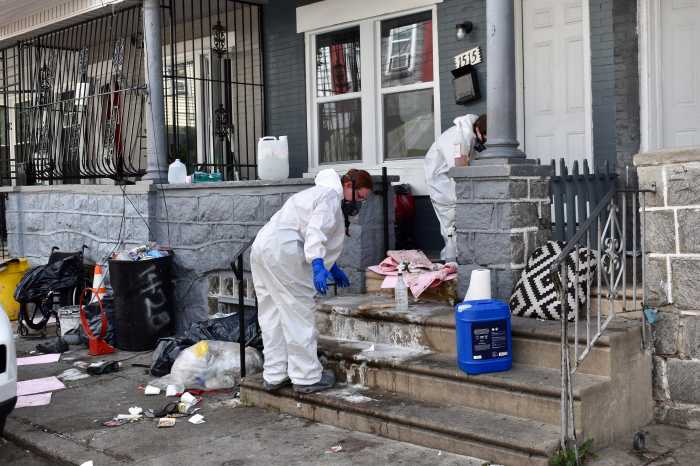Longtime Point Breeze resident Claudia Sherrod doesn’t think there are extensive problems with Washington Avenue, a major street that defines much of South Philadelphia.
In response to safety concerns, particularly around kids needing to walk to school, she says, “I was born and raised in the community, and I crossed it as a child.”
Dena Driscoll, a parent of two children who attend Fanny Jackson Coppin School, worries about them crossing the five-lane road to go to their after-care program.
“This affects my life every day,” she told Metro. “It’s about these kids who have to cross that street every day.”
The debate over how to restructure Washington Avenue, which is due for repaving and restriping this year, has boiled over, turning into a proxy war between residents and business owners with different priorities.
To some, it has been a battle between neighborhood old-timers and relative newcomers, or a symptom of increasing gentrification. Others view the discourse as breaking down along racial lines.
On Saturday, the city’s Office of Transportation, Infrastructure, and Sustainability (OTIS) unveiled two options and eliminated a previous plan to go with three lanes — one travel lane in each direction, along with a turning lane.

One proposal, dubbed the four-lane layout, would include four traffic lanes along most of the project’s scope, from 4th Street to Grays Ferry Avenue, keeping five lanes between 12th and 16th streets.
In the other option, known as the “mixed layout,” different sections of the road would be divided into three, four and five lanes.
The three-lane plan, favored by urbanists and bicycling groups, was rolled out in 2020 as the “Final Design Decision” in a presentation but, following pandemic-related construction delays, was scrapped after an additional round of outreach.
Every proposal incorporates protected bike lanes, in which cyclists are permitted to ride along the curb, separated from moving vehicles by parked cars.
“This plan isn’t about bicycle lanes,” said Nicole Brunet, a field organizer for PennEnvironment who supports the three-lane plan. “The real concern is about the amount of roadway that people have to cross to get to the other side.”
Adding an additional lane means children and other pedestrians must traverse an additional 7 feet, she added.
Washington Avenue is part of the city’s high-injury network, meaning it has more crashes than most Philadelphia streets. From 2016 to 2020, there were 169 collisions, including three fatal crashes, on the stretch, according to city data.
Supporters of the three-lane plan appear to be losing faith in the long-winded process, which they thought was all but decided, and in their elected officials.
Driscoll, co-chair of 5th Square, a political action committee that fights for safer streets, public transit improvements and other issues, believes Mayor Jim Kenney is abandoning his Vision Zero platform, which calls for eliminating all traffic deaths in the city by 2030.
“What we do need is to make sure that we have engineers and planners who are picking the safest option for our streets,” Driscoll said. “And quite literally, they took the safest option, wrote it on a piece of paper themselves and then said, ‘No, it’s not an option.’”
Officials from the Kenney administration said the decision to go away from the three-lane layout was influenced by meetings with neighborhood groups, particularly those representing minority communities.
“In the eight years that the city has been working on the project there has never been significant support for any type of road diet emerging from the deeply established African American, Asian American communities and other long-standing businesses who would be affected by the change,” spokesperson Joy Huertas said in a statement.
Backers of the 2020 ‘design decision’ say there was a robust, years-long outreach program that showed an overwhelming majority of residents support three lanes.
“I thought that the city had actually taken one of their most ambitious outreach plans ever,” Driscoll said. “There were more surveys. There were more people watching than had ever been to a singular meeting before that they’ve hosted.”
Among those who oppose the three-lane option, there is a belief that organizations like 5th Square and the Bicycle Coalition of Philadelphia attempted to steamroll neighbors and small businesses.
“I think it’s the bike coalition pushing their agenda,” said Sherrod, who is president of Point Breeze Community Network Plus. “I think they need to make bikers have licenses, permits and insurance, because people are getting hurt by bikers.”
Tom Donatucci, who runs Knickerbocker Properties, a real estate management company on Washington Avenue, believes safety improvements are needed.
“I’m not that naive to say there should be no change,” said Donatucci, managing partner of the Washington Avenue Property Owners Association. “But it can’t be at the expense of business.”
Sherrod and Donatucci separately expressed concerns about traffic congestion, as well as trucks and other vehicles being diverted to smaller streets.
Driscoll said 5th Square is not prepared to compromise on safety. The group has already raised more than $5,200 to oust Councilmembers Kenyatta Johnson and Mark Squilla, whose districts include the neighborhoods around Washington Avenue.
Vincent Thompson, a spokesman for Johnson, said the councilman is studying the latest recommendations and appreciated OTIS’s outreach to a diverse pool of residents.
“The goal of everyone in this process — elected officials, OTIS and residents — is to make Washington Avenue much safer than it is today,” Thompson said in a statement.
Likewise, Squilla told Metro he prefers to wait until a March 1 open house to engage in an in-depth discussion of the project.
“I trust that OTIS will come up with the safest possible plan, and present it to us, and then we will go from that point and move forward,” he said Monday.
Needless to say, that open house meeting is expected to be well-attended.


























